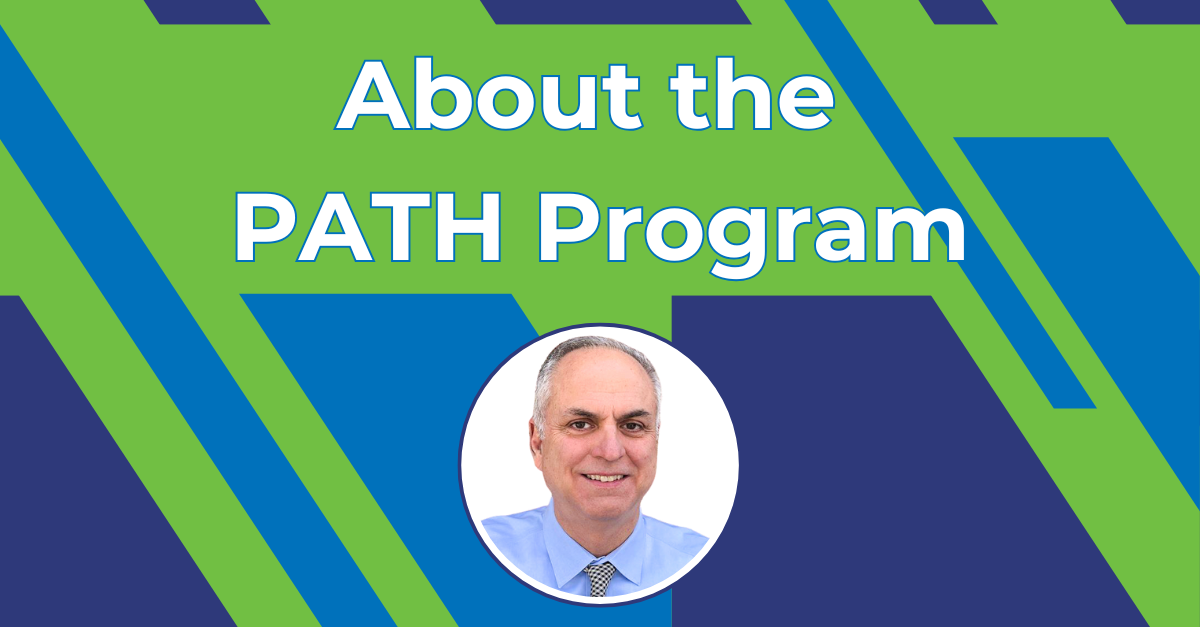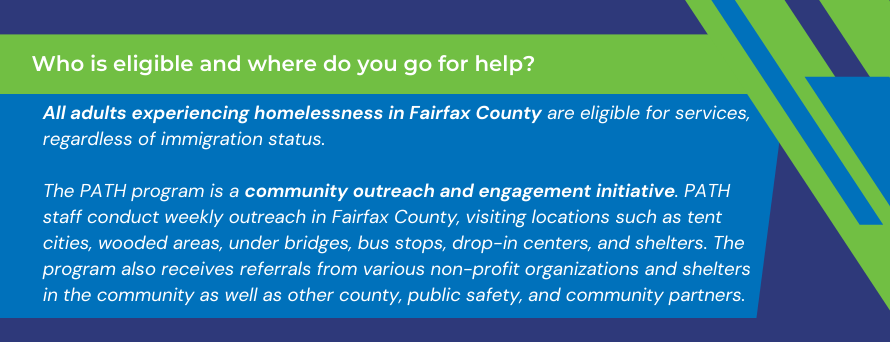The Program for Assistance in Transitioning from Homelessness (PATH) is a service within the Intensive Community Treatment Division at the CSB. The work can be challenging as well as rewarding. The teams are persistent, determined and share self-insights that lead to success for individuals in our care.
- Bob MacMurdo, CSB Division Director, Intensive Community Treatment Services
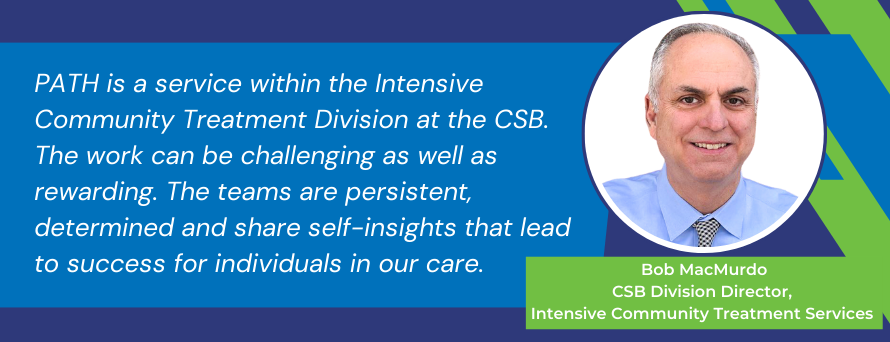
About the Program for Assistance in Transitioning from Homelessness (PATH) Services
The Program for Assistance in Transitioning from Homelessness (PATH) is a service within the Intensive Community Treatment Division at the CSB. There are four separate programs within this division, including Assertive Community Treatment (ACT), Intensive Case Management (ICM), and Discharge Planning for individuals in state hospitals as well as the population adjudicated Not Guilty by Reason of Insanity (NGRI). Clinicians provide services including hands on case management, resource connections, individual live service plans, ongoing advocacy, and crisis intervention. The work can be challenging as well as rewarding. The teams are persistent, determined and share self-insights that lead to success for individuals in our care.
The PATH program focuses on supporting some of the community’s most vulnerable individuals: adults experiencing homelessness, those with serious mental illness and individuals with co-occurring disorders. PATH provides engagement and case management services to unsheltered individuals.
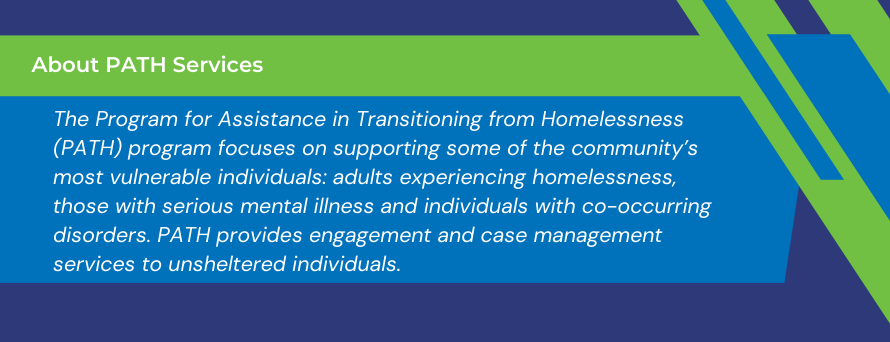
Who in the community is eligible, how do you access this service, and where do you go to get help?
All adults experiencing homelessness in Fairfax County are eligible for services, regardless of immigration status.
The PATH program is a community outreach and engagement initiative. Typically, people don’t come to us—we go to them. PATH staff conduct weekly outreach in Fairfax County, visiting locations such as tent cities, wooded areas, under bridges, bus stops, drop-in centers, and shelters. During outreach, PATH staff identify individuals who meet the program's criteria. Once eligible individuals are identified, staff engage with them and provide consistent outreach to build rapport and trust.
The PATH program also receives referrals from various non-profit areas, such as the Lamb Center and shelters in the community such as Kennedy shelter, Embry Rucker shelter, and Baileys shelter. PATH additionally receives referrals from the police department, community members, other CSB programs, and the Fairfax County Health Department, Adult Protective Services unit, and Office to Prevent and End Homelessness. PATH staff partner with different community programs as well as the Health Department to deliver holistic treatment to homeless adult individuals in Fairfax County.
What is the outcome or improvement on people’s lives after they’ve received this service?
PATH staff help improve individuals lives by stabilizing them through referrals to essential services. These services include mental health treatment, psychotropic medications, permanent supportive housing, basic benefits programs like SNAP, and medical care. These interventions support individuals’ overall well-being and stability.
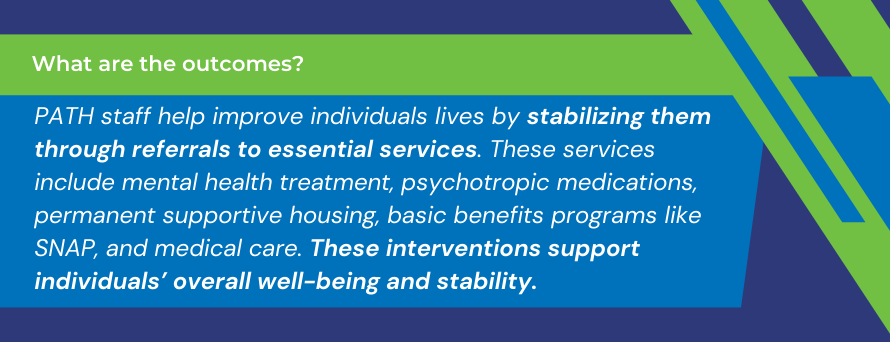
What is your favorite success story?
Jeffrey has been a PATH client for about a year. During routine outreach in the Richmond Highway corridor, PATH staff first encountered him in a disheveled state, sitting on a bench with alcohol and cigarettes. Jeffrey had been without housing for a long time and was often exposed to danger and the elements. Any money he panhandled was spent on alcohol and cigarettes. After initial distrust, Jeffrey gradually built a rapport with PATH staff through ongoing outreach. He was taken to the Gartlan drop-in center where he received food, a shower and clean clothes. He also agreed to restart his injectable medication, leading to improvements in his mental health.
Jeffrey was persuaded to explore housing options and was assisted in entering a local shelter, where he continues to stay while awaiting permanent supportive housing. PATH staff helped him access his Social Security Disability Insurance (SSDI) benefits to meet basic needs. Despite ongoing struggles with substance use, his mental health has improved with continued support from the PATH psychiatric nurse who is monitoring his progress.
For media inquiries, contact CSBCommunications@fairfaxcounty.gov.


